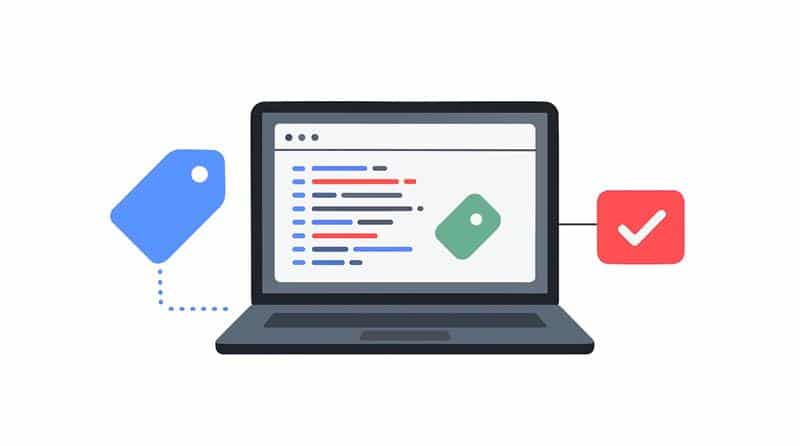Are you a product owner and does testing your product take too much time before release? Perhaps bugs are slipping through the cracks, putting added strain on the QA teams (who already have a lot to deal with). Have you ever wondered or wished to move past this problem? Quality assurance (QA) testing or QA/testing is essential in product development as it ensures that the product functions properly and is free of bugs.
QA teams, on the other hand, may find it difficult to meet all the testing requirements.
Before handing over the software to the QA team, developers need to do their i’s and cross their t’s.
Rushing into QA/testing without proper preparation is like jumping the gun – it leads to delays and subpar products.
It’s crucial for product owners to ensure their product is in shape before diving into the testing phase.
Why is Product Analysis Necessary before QA/Testing?
Product analysis before the Q/A testing is necessary to make the testing smooth. It can lead to many risks and conflicts among teams.
Here are some major risks that come along the way if you send incomplete software.
Unexpected Behavior and User Interactions
Testing unfinished software can result in unpredictable behavior and make it harder to predict user behaviors.
Issues With Acceptance Criteria
Incomplete acceptance criteria can generate testing confusion and inefficiency, resulting in release delays.
Increased Number of Bugs
Incomplete work may lead to a greater number of defects being detected during testing, necessitating more time and effort for bug resolving and retesting.
Skipping Testing Processes.
Skipping the testing process altogether carries substantial dangers, including the release of software with unknown flaws and vulnerabilities.
Impact on Quality, Timeline, and Reputation.
Testing unfinished software can have an impact on the end product’s quality, timeliness, and reputation.
Top Signs Your Product is Not Ready for QA/Testing
Lack of Clear Requirements and Specifications
One of the most common reasons products are not ready for QA/Testing is the lack of clear requirements and specifications. Without detailed and specific instructions, your development team won’t know what to build, and your QA/Testing team won’t know what to test.
Incomplete or Missing Functionality
Another sign that your product is not ready for QA/Testing is incomplete or missing functionality. If your product is lacking key features or functions, it’s not ready for testing.
Poorly Written or Untested Code
Poorly written or untested code, this can also be a big hurdle in the QA/Testing process. If your code is full of bugs, errors, and security vulnerabilities, it will be hard to test that and then you need to work on that again which will be more time taking.
Lack of Clear Definition of Ready (DoR)
A significant sign that a product may not be ready for QA/ testing is the absence of a clear “Definition of Ready” (DoR). The DoR is essential for defining the minimal requirements to consider a backlog item as “Ready for Quality at Speed”.
Excessive Testing Leading to a Flawed Product
Over-testing software can lead to the opposite effect of ensuring a flawless product. It can be counterproductive, potentially causing a flawed product.
Unclear Exit Criteria
Undefined exit criteria can be an indicator that the product is not in a state ready for QA/ testing. Clear exit criteria are essential for determining the point at which testing can be stopped.
Insufficient Suspension Requirements
The presence of insufficient suspension requirements can impede effective testing. Adequate suspension requirements contribute to the readiness of the product for QA/ testing.
Lack of Proper Documentation, Configuration, and Observability
Inadequate documentation, configuration, and observability can be indicators of a product not yet ready for QA/ testing.
Lack of Clarity in Product Status
If the product review takes longer than anticipated, or is subject to delays resulting from new submissions, it could indicate a lack of readiness for QA/testing.
Differences in the Testing Environment
If there are discrepancies between the testing and production environments, difficulties may arise that can only be reproduced in the real environment.
It is recommended that a testing environment closely resembles the production environment.
Negative Feedback from Development Team
Dismal or critical feedback in product development communication could signal underlying issues, indicating that the product is not yet ready for QA/ testing.
Feedback is integral in ensuring that a product aligns with goals and user needs.
These signs collectively indicate the potential unpreparedness of a product for QA/testing, highlighting aspects such as clarity, documentation, testing activity, and team feedback, all of which are crucial in determining the readiness of a product for quality assurance efforts.
Checklist Product Owners Should Make Before QA/Testing
Defining Work and Aligning with Vision
Product Owners play a crucial role in defining work and aligning it with the product vision, ensuring that business needs are met and value is optimized.
Collaboration with QA Analysts
Close collaboration with QA analysts and testers helps clarify requirements, provide feedback on deliverables, and prioritize features for desired outcomes.
Ensuring Business Requirements
Product Owners ensure that the product meets business requirements and user needs by working closely with developers and QA testers.
Prioritizing Features for Value
Prioritizing features based on value delivered to end users is key, requiring ongoing collaboration between Product Owners and QA testers.
How Incomplete Product Affects QA Tools?
Incomplete software can significantly affect QA tools in several ways:
Limited Test Coverage
Incomplete software may lack certain features or functionalities, limiting the scope of test cases that can be executed by QA tools.
This can result in gaps in test coverage, leading to potential issues being overlooked.
Inaccurate Test Results
Test management tools rely on stable and complete software to generate accurate test results. Incomplete software may cause errors or unexpected behavior during testing, leading to unreliable test results and false positives/negatives.
Difficulty in Test Automation
Test automation tools require stable and consistent software to automate test cases effectively. Incomplete software may have frequent changes or unstable components, making it challenging to create and maintain automated test scripts.
Integration Challenges
QA tools often integrate with other software development tools and systems. Incomplete software lacks the necessary interfaces or APIs that are required for easy integration with QA tools. Thus, it leads to compatibility issues and data synchronization problems.
Increased Manual Effort
In case of incomplete software, QA teams need to rely more on manual testing techniques. This can result in increased manual effort, prolonged testing cycles, and delays in finding defects and issues. This will ultimately delay the reporting process and defect management.
Thus, incomplete software can hinder the working process of QA tools, affecting the quality of testing that delays the delivery of high quality software products.
Take Away!
Q/A testing is necessary before releasing your product in the market. But before getting to testing it is also necessary to check whether the product is ready for testing or not. Don’t let this step slip away!
If the product is left incomplete or is not tested properly, it affects not just the testing process but also the end results which lead to customer dissatisfaction and poor reputation of your product in the market.
If you are a product owner, be sure to examine your product thoroughly before giving it to testers.















































